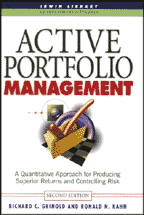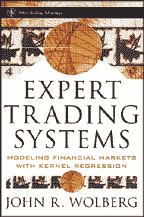 |
 The Trader's Tax Solution: Money-Saving Strategies For The Serious Investor (546 pages, $59.95 hardcover, 2000, ISBN 0471370045), by Ted Tesser, published by John Wiley & Sons. This comprehensive guide provides solutions for the tax problems facing most US traders, investors, and income earners today -- excessive tax payments to federal and local governments, insufficient preparation for retirement, and the fate of bequest. Here are invaluable business, estate, retirement planning, and tax-saving strategies that virtually anyone can implement. Specific information is included to help traders reduce their tax liability, with individual case studies, real examples, and model tax returns. Here's how to disinherit the federal government, use education tax breaks, master the basics of estate planning, use the annual gift tax exemption, uphold trader status -- even under audit -- and augment underfunded retirement plans and a great deal more. The Trader's Tax Solution: Money-Saving Strategies For The Serious Investor (546 pages, $59.95 hardcover, 2000, ISBN 0471370045), by Ted Tesser, published by John Wiley & Sons. This comprehensive guide provides solutions for the tax problems facing most US traders, investors, and income earners today -- excessive tax payments to federal and local governments, insufficient preparation for retirement, and the fate of bequest. Here are invaluable business, estate, retirement planning, and tax-saving strategies that virtually anyone can implement. Specific information is included to help traders reduce their tax liability, with individual case studies, real examples, and model tax returns. Here's how to disinherit the federal government, use education tax breaks, master the basics of estate planning, use the annual gift tax exemption, uphold trader status -- even under audit -- and augment underfunded retirement plans and a great deal more.
Wiley Book Order Dept.
1 Wiley Drive
Somerset, NJ 08875
Phone 800 225-5945, 732 469-4400 x2497
Internet https://www.wiley.com
BACK TO LIST |








